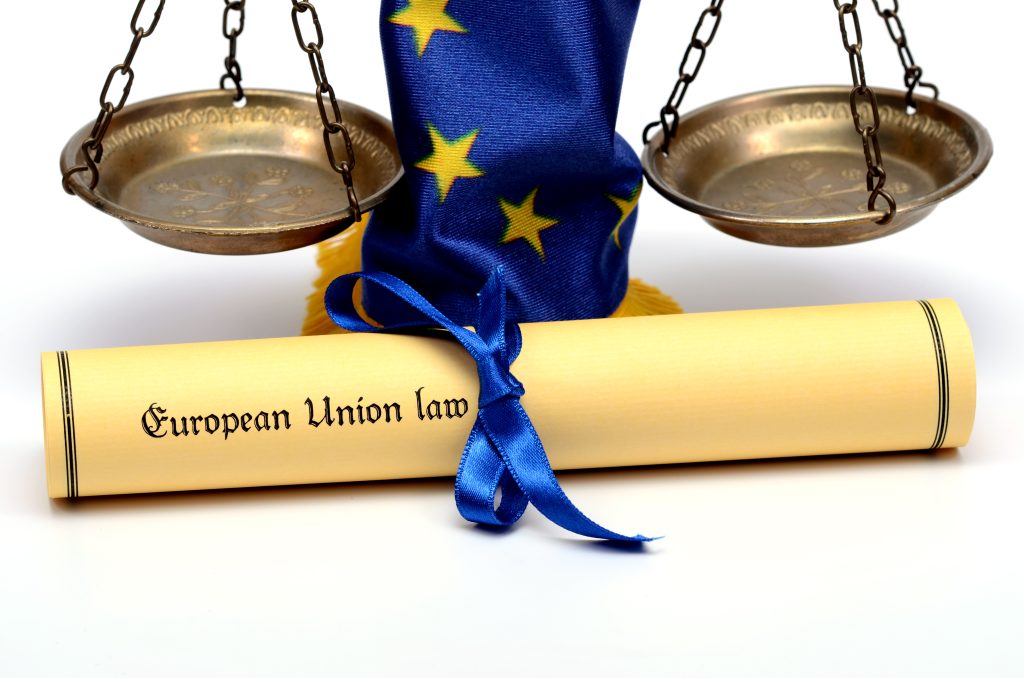“The referring Court argues that there is a risk that [the existing language] can lead to the seizure or destruction of, or an injunction being granted concerning, lawful goods where the trademark right has been exhausted. This restricts the free movement of goods, which is a fundamental principle in the EU.”
 The International Trademark Association (INTA) has made an amicus submission before the EU Court of Justice (CJEU) in a case concerning parallel imports and EU trademark law. (Case C-175/21 Harman International Industries, Inc. v. AB SA.)
The International Trademark Association (INTA) has made an amicus submission before the EU Court of Justice (CJEU) in a case concerning parallel imports and EU trademark law. (Case C-175/21 Harman International Industries, Inc. v. AB SA.)
In the case at hand, Harman, which makes audiovisual equipment, brought trademark infringement proceedings in Poland against AB, a distributor. AB had put on the market goods featuring Harman’s trademarks, which it had obtained from a third party.
Europe operates a system of regional exhaustion, as set out in Article 15(1) of the EUTM Regulation, and in parallel imports cases national courts have referred to “goods which have not been put on the market within the European Economic Area (EEA) by the right holder or with his consent.” (Gender-neutral language has not yet become established in EU jurisprudence).
In this case, Harman argued that the goods had been imported into Poland and had not been put on the market within the EEA by Harman or with its consent. AB claimed it had received assurances when it bought the goods that the trademark rights were exhausted.
The Question Before the Court
In the Harman case, the Regional Court of Warsaw has referred a question to the CJEU, asking essentially if national courts should continue to use the general wording above. The referring Court argues that there is a risk that it can lead to the seizure or destruction of, or an injunction being granted concerning, lawful goods where the trademark right has been exhausted. This restricts the free movement of goods, which is a fundamental principle in the EU.
The referring Court argues that, instead of a court or other enforcement authority having to determine which goods have not been put on the market in the EEA by the right holder or with its consent, rights owners should be required to give a precise reference to the markings or serial numbers of the relevant goods.
In its brief, INTA disagrees for four reasons: (1) the wording used by national courts stems from EU legislation and CJEU rulings; (2) the wording cannot contribute to a partitioning of markets per se and the facts should be established in each case; (3) exhaustion is a defense to infringement and the defendant bears the burden of proof; (4) the alternative proposed by the referring court potentially places “impossible” burdens on rights owners, by requiring information they do not have, and in any case there are already safeguards against excessive enforcement.
INTA therefore argues that the question referred should be answered in the negative, and national courts should not be precluded from using the established wording.
The reference to the CJEU was filed in March last year. A hearing date has not yet been published, but the hearing is likely to be held this year, with a judgment later in 2022 or in 2023.
The Question in Full
The question referred in full is:
Must the second sentence of Article 36 TFEU, read in conjunction with Article 15(1) of Regulation (EU) 2017/1001 of the European Parliament and of the Council of 14 June 2017 on the European Union trade mark, and in conjunction with the second sentence of Article 19(1) of the Treaty on European Union, be interpreted as precluding the practice of the national courts of the Member States, which is that the courts:
– when upholding claims by right holders to prohibit the importation, putting on the market, offering, advertising of goods bearing the EU trade mark, to order their withdrawal from the market or to order their destruction;
– when ruling, in proceedings to secure claims, on the seizure of goods bearing the EU trade mark,
refer in their rulings to ‘goods which have not been put on the market within the European Economic Area by the right holder or with his consent’, with the result that it is left to the enforcement authority, in view of the general wording of the ruling, to determine which items bearing the EU trade mark are subject to the injunctions and prohibitions granted (that is to say, which items have not been put on the market within the European Economic Area by the right holder or with his consent), while the possibility of challenging the aforementioned findings of the enforcement authority before a court in declaratory proceedings is excluded or limited by the nature of the legal remedies available to the defendant in proceedings to secure claims and in enforcement proceedings?

![[IPWatchdog Logo]](https://ipwatchdog.com/wp-content/themes/IPWatchdog%20-%202023/assets/images/temp/logo-small@2x.png)

![[Advertisement]](https://ipwatchdog.com/wp-content/uploads/2024/04/Patent-Litigation-Masters-2024-sidebar-early-bird-ends-Apr-21-last-chance-700x500-1.jpg)

![[Advertisement]](https://ipwatchdog.com/wp-content/uploads/2021/12/WEBINAR-336-x-280-px.png)
![[Advertisement]](https://ipwatchdog.com/wp-content/uploads/2021/12/2021-Patent-Practice-on-Demand-recorded-Feb-2021-336-x-280.jpg)
![[Advertisement]](https://ipwatchdog.com/wp-content/uploads/2021/12/Ad-4-The-Invent-Patent-System™.png)







Join the Discussion
No comments yet.